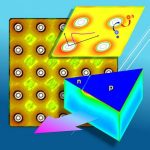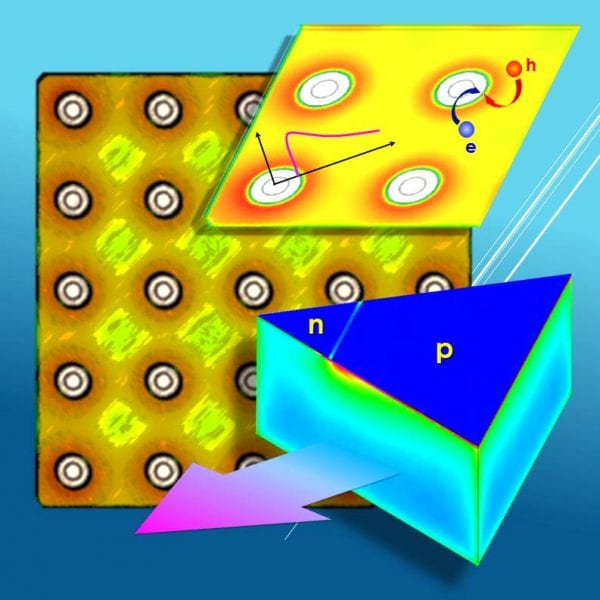There is ongoing interest in the fabrication of micro-pixel light-emitting diodes (LEDs) and LED arrays in view of their potential application in Li-Fi communication technology. Reduction of the LED dimensions necessary for this brings into play physical effects that have not been considered before as critical ones for the device performance. In particular, surface recombination has been known for a long time as an essential channel of carrier losses in AlGaInP-based LEDs, lowering their efficiency of the chip sizes as small as a few hundred microns. Surprisingly, this mechanism was never regarded as a valuable factor capable of affecting the efficiency of blue and green III-nitride LEDs.
In order to understand whether surface recombination may limit the efficiency of III-nitride LEDs, researchers from STR Group – Soft-Impact, Ltd. (St.Petersburg, Russia) have carried out a simulation study choosing two state-of-the-art commercial high-power LED chips as prototypes. They have found that even in rather  large LEDs, surface recombination may reduce the maximum external quantum efficiency by ~5-7 absolute percent, which is comparable with the remaining room for the efficiency improvement.
large LEDs, surface recombination may reduce the maximum external quantum efficiency by ~5-7 absolute percent, which is comparable with the remaining room for the efficiency improvement.
The simulations also revealed a difference between phosphide and nitride LEDs. Phosphide LEDs possess a higher ambipolar carrier diffusivity, operating at a relatively low electron and hole concentrations in the active region, which results in a longer carrier life time. In contrast, nitride LEDs work at much higher carrier concentrations, having a remarkably shorter life time. In addition, the carrier diffusivity is also lower compared to AlGaInP materials due to strong composition fluctuations in the InGaN alloys, materials used for the active region fabrication in these devices. As a result, the carrier diffusion length in nitride LEDs is much smaller than in phosphide ones, partly suppressing the negative impact of surface recombination on the LED efficiency. The shortening of the life time with the carrier concentration/operating current was predicted to reduce the relative carrier losses in LEDs caused by surface recombination.
According to the author’s opinion, the impact of surface recombination on the emission efficiency may be especially pronounced in III-nitride light emitters with a large active region perimeter-to-area ratio, like micro-LEDs, multi-pixel LED arrays, nanostructure LEDs, etc. Enhancement of surface recombination is also expected in UV LEDs because of presence of Aliminum in the active region. Passivation of free active region surface with proper dielectric films is suggested as a remedy against this kind of carrier losses.

















